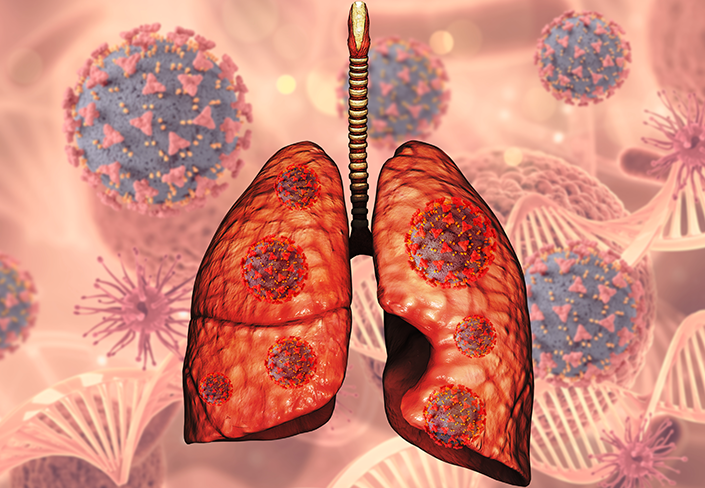Asthma is a chronic inflammatory illness of airways that can affect anyone at any age. As a result of inflammation and muscle tension around the small airways, the airways in the lungs become congested.
Shortness of breath and chest tightness are all symptoms of asthma that can be caused by this. It is common for these symptoms to be worse at night or during physical activity because they are transient in nature.
Asthma symptoms might be aggravated by a variety of other typical factors. Viral infections (colds), dust, smoke, fumes, changes in temperature, grass and tree pollen, animal hair and feathers, strong soaps and perfumes are just a few examples of what can set off an allergic reaction in different people. The best pulmonologist helps you find the right treatment for asthma.
An illness called pneumonia causes the air sacs in one or both lungs to become inflamed. Coughing up phlegm or pus, fever, chills, and difficulty breathing are all major lung infection symptoms that can result from the air sacs being swollen with fluid or pus (purulent material). One of the most common causes of pneumonia is caused by a range of microorganisms.
Pneumonia can be minor or life-threatening, depending on the severity of the infection. Infants and small children, the elderly, and those with health issues or compromised immune systems are at greatest risk. Expert Pulmonologists Worlds Nic offers state-of-the-art facilities that help in the treatment of pneumonia.
Edema of the lungs' tissues and air spaces (typically alveoli) is referred to as "pulmonary congestion'' when there is an excessive buildup of liquid in the tissues and spaces. As a result, hypoxemia and respiratory failure are possible outcomes.
The major cause of pulmonary edema is when the left ventricle fails.
When lung tissue blood vessels are damaged (non-cardiogenic pulmonary edema). The three main goals of treatment are to improve respiratory function, address the underlying cause, and avoid additional damage to the lungs. Respiratory failure or cardiac arrest can occur as a result of hypoxia in pulmonary edema develops suddenly (acutely). The best pulmonologists at Worlds Nic strive to provide advanced facilities to treat respiratory related concerns.
Pulmonary embolism (PE) is the obstruction of a lung artery by a material that has traveled via the bloodstream from another part of the body (embolism). PE symptoms include shortness of breath, chest pain, especially while inhaling, and coughing up blood.
There may also be signs of a blood clot in the leg, such as a red, heated, swollen, and painful leg. Low blood oxygen levels, fast breathing, high heart rate, are symptoms of pulmonary embolism.
The diagnosis of pulmonary embolism may be confirmed by CT pulmonary angiography, lung ventilation/perfusion scan, or ultrasound of the legs. DVT and PE are often referred to as venous thromboembolism (VTE).
Due to abnormalities in the tiny airways of the lungs, airflow in and out of the lungs is restricted. Multiple processes contribute to the constriction of the airways. Parts of the lung may be destroyed, mucus may obstruct the airways, and there may be inflammation and edema of the airway lining.
COPD has emphysema or chronic bronchitis components. Typically, emphysema refers to the destruction of the tiny air sacs at the end of the lung airways. Chronic bronchitis refers to a persistent cough accompanied by phlegm production caused by inflammation in the airways.
COPD and asthma share similar symptoms (cough, wheezing, and breathing trouble), and individuals can have both illnesses. Here at Worlds Nic, our expert pulmonologists have had success treating chronic obstructive pulmonary disease.

